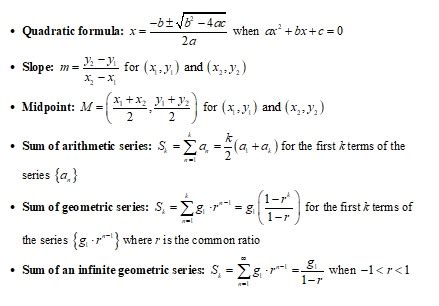Struggling with pre-calculus? You’re not alone! This comprehensive guide will break down the complexities of this foundational subject into bite-sized chunks, empowering you to tackle your studies with confidence.

Cracking the Algebra and Functions Code
Algebra Review:
- Review operations with polynomials, rational expressions, exponents, and radicals.
- Master factoring techniques, including factoring by grouping, difference of squares, and completing the square.
- Solve linear, quadratic, and higher-degree equations.
- Manipulate inequalities and systems of equations.
Functions:
- Understand the concept of a function as a rule relating input (domain) to output (range).
- Graph functions such as linear, quadratic, polynomial, rational, and exponential functions.
- Determine the domain, range, intercepts, and extrema of functions.
- Perform function transformations (horizontal/vertical shifts, reflections, stretches/compressions).
Exploring Trigonometric Relationships
Unit Circle and Trig Functions:
- Define the unit circle and understand the six trigonometric functions (sine, cosine, tangent, cosecant, secant, and cotangent).
- Calculate trig values using the unit circle, special triangles, and reference angles.
- Solve trigonometric equations involving a single or multiple functions.
Trig Identities and Applications:
- Utilize fundamental trig identities (Pythagorean identity, double/half-angle formulas) to simplify expressions.
- Apply trig functions to real-world problems, such as solving for missing angles or distances in triangles.
- Understand the graphs of trigonometric functions and their properties (periodicity, amplitude, phase shift).
Conquering Exponents, Logarithms, and Matrices
Exponential and Logarithmic Functions:
- Define exponents and logarithms as inverse operations.
- Solve exponential and logarithmic equations using properties of exponents and logarithms.
- Graph exponential and logarithmic functions.
Matrices:
- Perform operations with matrices (addition, subtraction, multiplication).
- Determine the inverse and determinant of a matrix.
- Solve systems of linear equations using matrices (Gaussian elimination).
Common Mistakes to Avoid
- Confusing exponents with logarithms.
- Mixing up trigonometric ratios.
- Forgetting to check the domain of functions when performing calculations.
- Failing to simplify expressions before solving equations.
- Treating matrices as polynomials when performing operations.
Step-by-Step Approach to Success
- Start with algebra basics. Ensure you have a solid foundation in algebra before moving on to functions and trigonometry.
- Visualize concepts. Draw graphs and diagrams to help you understand the behavior of functions and trigonometric relationships.
- Practice regularly. Solve ample problems to build proficiency and identify areas needing improvement.
- Seek help when needed. Don’t hesitate to consult with your teacher, a tutor, or online resources if you encounter difficulties.
- Review and reinforce. Regularly test your understanding by revisiting old topics and solving review problems.
Applications in the Real World: Empowering Innovations
Pre-calculus serves as a stepping stone to various STEM fields and practical applications. From architecture and engineering to computer science and finance, a solid foundation in pre-calculus empowers you to:
- Design efficient structures by understanding the principles of trigonometry.
- Solve complex equations in engineering simulations.
- Develop algorithms and encryption systems using exponential and logarithmic functions.
- Analyze data and make financial projections using matrices.
Useful Tables for Reference
Table 1: Unit Circle Values
| Angle (Radians) | Sine | Cosine | Tangent |
|---|---|---|---|
| 0 | 0 | 1 | 0 |
| π/6 | 1/2 | √3/2 | √3/3 |
| π/4 | √2/2 | √2/2 | 1 |
| π/3 | √3/2 | 1/2 | √3 |
Table 2: Fundamental Trig Identities
| Identity | Formula |
|---|---|
| Pythagorean Identity | sin²θ + cos²θ = 1 |
| Double Angle Formula for Sine | sin(2θ) = 2 sinθ cosθ |
| Half-Angle Formula for Cosine | cos(θ/2) = ±√[(1 + cosθ)/2] |
Table 3: Exponential and Logarithmic Properties
| Property | Formula |
|---|---|
| Exponent Rule | aᵐ × aⁿ = a^(m + n) |
| Logarithm Definition | logₐ(b) = c if aᶜ = b |
| Product Rule of Logarithms | logₐ(bc) = logₐ(b) + logₐ(c) |
Table 4: Matrix Operations
| Operation | Formula |
|---|---|
| Addition | A + B = [aᵢⱼ + bᵢⱼ] |
| Subtraction | A – B = [aᵢⱼ – bᵢⱼ] |
| Multiplication | A × B = [∑(aᵢⱼ × bⱼₖ)] |
Conclusion
Mastering pre-calculus is not merely about passing an exam but about building a strong foundation for future academic and professional endeavors. By embracing the concepts, practicing diligently, and seeking support when necessary, you can unlock the gateway to success in higher mathematics and beyond.
